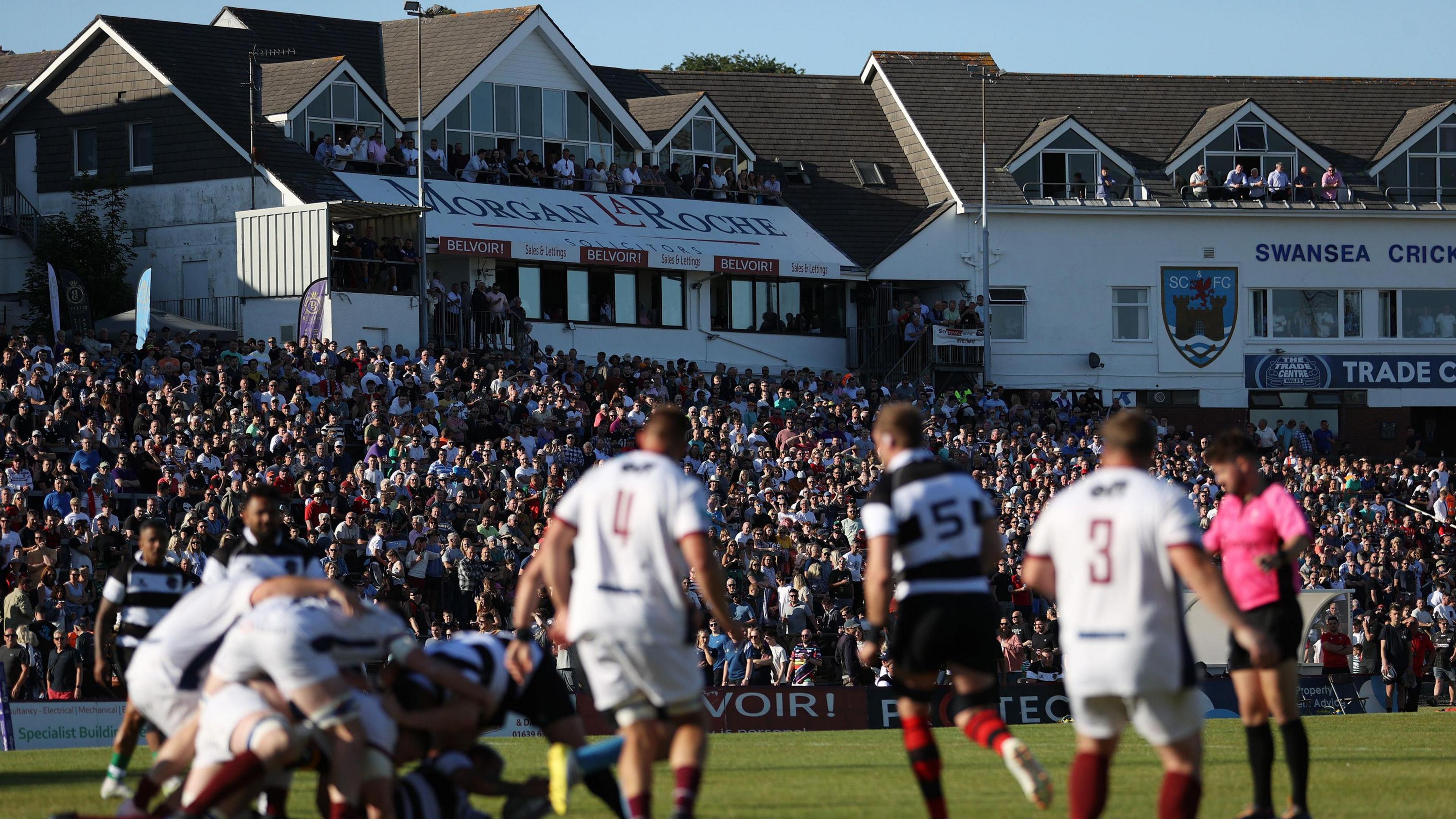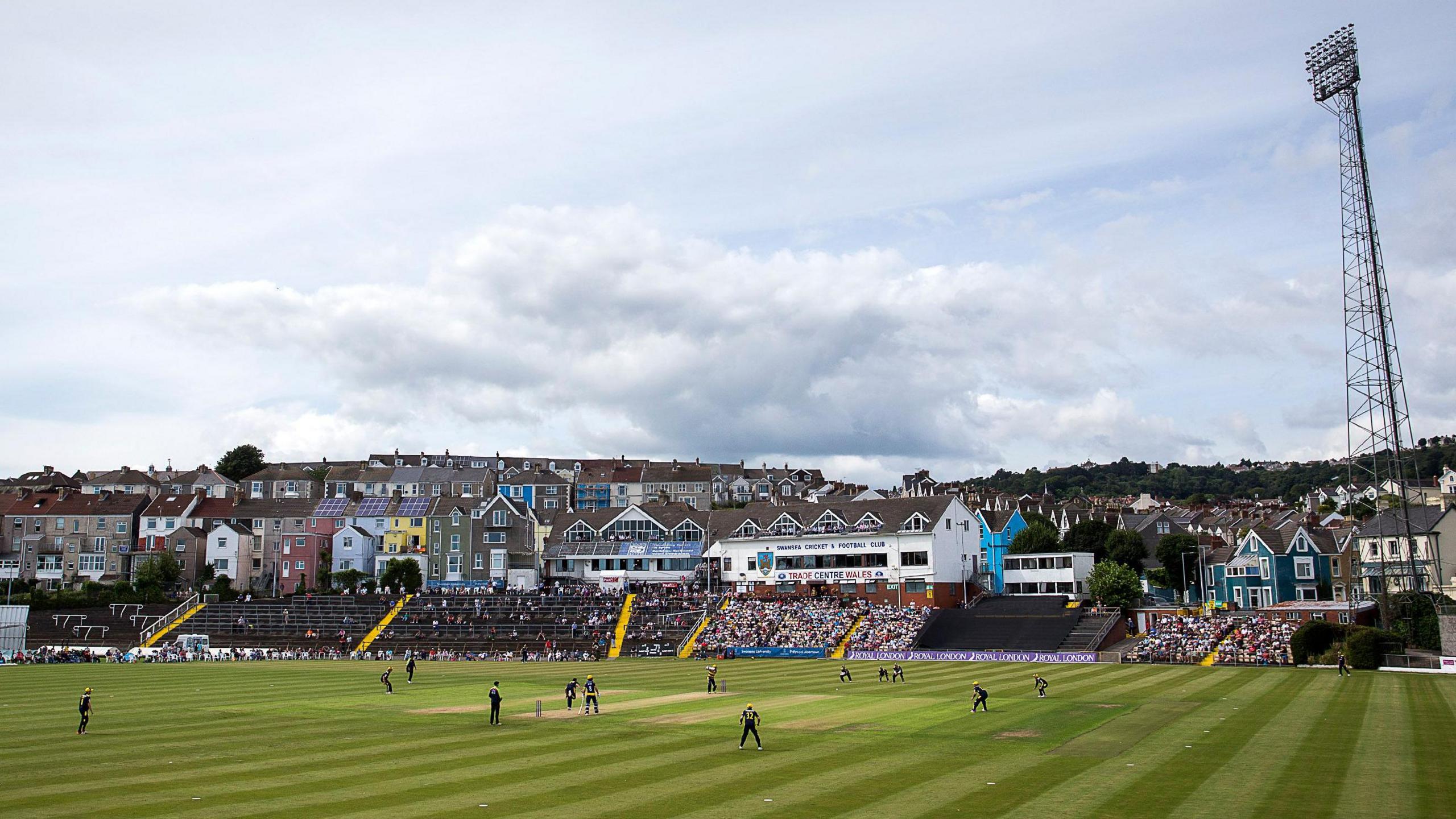Ospreys choose St Helen's as new stadium home

Sport has been played at Swansea's St Helen's ground since 1875
- Published
Ospreys are to build a new stadium at St Helen’s in Swansea and aim to move in time for the 2025-26 season.
The region said the move will involve a "multi-million pound investment" in the famous old ground, including a 4G pitch and new stands.
Ospreys, formed in 2003, regularly played at St Helen's before moving into a permanent home at Swansea City's 21,000 seater football stadium in 2005.
But chief executive Lance Bradley announced in January the region would be leaving for a smaller venue.
“Moving to a ground we can call our own home will be transformational for everyone involved with the club – including players, staff, supporters and sponsors," said Bradley.
“Our investment demonstrates our confidence not only in the plans we have both on and off the pitch, but also our confidence in the future of Welsh rugby and the plans being developed by the Welsh Rugby Union.”
Ospreys will respect St Helen's 'fantastic history'
Ospreys will continue to play at Swansea.com Stadium for the 2024-25 season, but will host games elsewhere if fixtures clash with landlords Swansea City.
The region had considered a permanent move to Bridgend after staging both a league and European fixture at the Brewery Field in the 2023-24 season, but opted for the larger city.
Bridgend Ravens said in a statement , externalit was "disappointed" to lose out but look forward to working with the Ospreys in the future.
"The move to St Helen’s not only keeps us close to the majority of our supporter and sponsor bases, but also allows us to work with Swansea council to inject new life into the famous St Helen’s Sports Ground," a statement read.
It added that the club felt "privileged" to make a home at the ground that hosted Wales' first home international in 1882.
However the move will require significant redevelopment of the old ground, that is still the home of Swansea RFC, to initially increase the current 4,500 capacity to around 8,000.
The record crowd at the venue topped 30,000 for a rugby league international between Wales and England in 1945, albeit in a very different stadium.

Ospreys plan to redevelop St Helen's over the next 12 months
Former Ospreys and Wales wing Shane Williams has welcomed the news.
“I'm glad they’ve got a new home having been trying for a couple of years," he told BBC Radio Cymru.
"I’ve fond memories of St. Helen’s. I remember a good atmosphere and always good support. It’s easy to reach for supporters and hopefully Ospreys will be able to get everyone back in the stadium again.”
St Helen's is owned by Swansea Council and leader Rob Stewart hailed the move as "great news" for the city.
"We have significant ambitions for a sports science park in Swansea and the Ospreys’ aim to commit their long-term future to Swansea aligns with this," Stewart said.
"There remains more work to do but we now have clarity to move forward with discussions."
Swansea RFC and Swansea University will continue to play at St Helen’s, with Ospreys saying their "ambition" is for the ground to host an increased number of community matches.
Swansea.com Stadium 'too big' for Ospreys
- Published24 May 2024
WRU reveals five-year plan to save Welsh rugby
- Published26 June 2024
British and Irish clubs learn Challenge Cup draw
- Published2 July 2024

Glamorgan have not played at St Helen's for five years, having previously made regular visits to the ground
Swansea Cricket Club have also been part of discussions over the Ospreys' move.
Ospreys say an announcement about where Swansea CC will play in the future will follow in due course.
In May, Stewart said any plan would accommodate the relocation of Swansea CC, who have played at the venue since 1875, although Glamorgan have not played a fixture there since 2019.
The arrival of Ospreys could signal the end of cricket's 150-year association with the ground overlooking Swansea Bay.
In 2021, Glamorgan chief executive Hugh Morris warned that the surface, outfield and facilities would not meet required first-class cricket standards that were introduced in 2023.
In 1968, Sir Garfield Sobers famously hit six sixes in an over - which has since been described as the most famous in cricket history - while playing for Nottinghamshire against Glamorgan at St Helen's.
Related topics
- Published31 August
